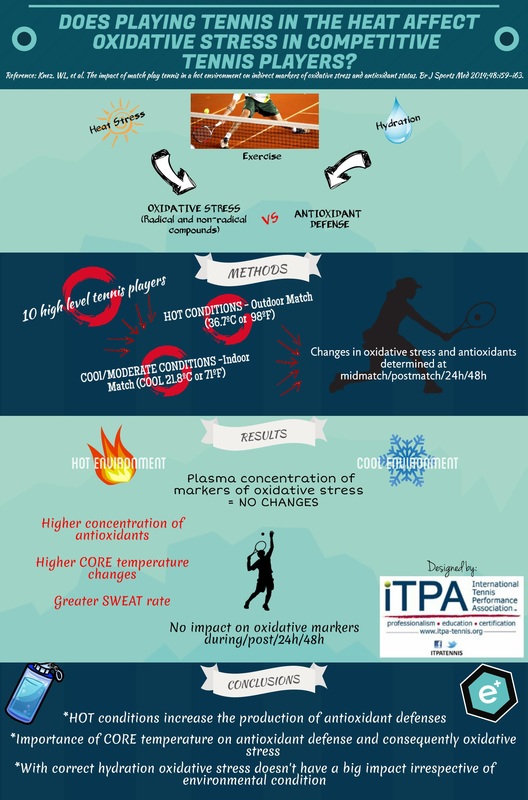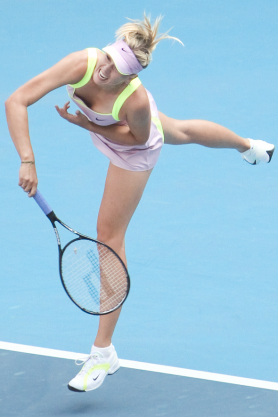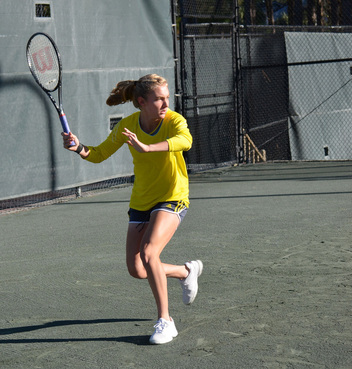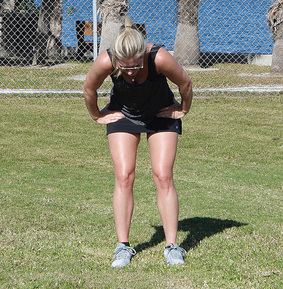|
** An accompanying explanation and article discussing this topic and infographic is on the iTPA Inner Circle Member Only Website for our members and subscribers. Attend the 2016 WORLD TENNIS FITNESS CONFERENCE (July 30th & 31st, 2016) in Atlanta, Georgia alongside the 2016 BB&T ATLANTA OPEN. Check out the website for more information and to register www.itpa-tennis.org/tennisfitconference.html
0 Comments
By Mark Kovacs, PhD, FACSM, CSCS*D, MTPS iTPA Executive Director @mkovacsphd www.mark-kovacs.com The 2015 US Open has seen a number of players struggle with cramps this year. Many years at the US Open players struggle when they compete in New York in the hot and humid conditions. In general the hottest, most difficult days in New York have temperatures between 85-95°F and 45-60% humidity. This temperature and humidity is not dissimilar to many parts of the US throughout the entire summer period. Therefore, why do some of the best players in the world struggle so mightily to combat the conditions? Also, what can the regular tennis player do to help avoid the dreaded exercise associated muscle cramps? I have been fortunate to have been around cramping research and researchers for more than 15 years. I have worked in three different thermal physiology labs under some of the smartest minds in the fields of heat, humidity, temperature regulation and cramping in athletes. These labs are designed to study everything including blood, sweat, urine, saliva and everything in between. Many questions about cramping have been answered, and some questions still remain. Cramping is a multi-faceted problem and many different types of cramps occur in athletes. Fatigue cramps can occur in hot and cold conditions. Heat related cramps are different, night time cramps are different again and eccentric exercise (think of doing 100 calf raises in a row) cramping differs as well. Also, some athletes are more cramp-prone than other athletes. As a result, solving the cramping problem requires a personalized solution from a highly trained individual who understands the many causes of cramping and appropriate solutions to prepare the athlete and prevent cramping. With the right training and appropriate monitoring and education, limiting and completely avoiding cramping is possible. Below are some initial areas that should be part of a training program to limit the chance of experiencing exercise associated muscle cramps during tennis play. 1) Poor and/or incorrect conditioning This is usually the most common cause. Many well-meaning athletes are just not training the correct way to prepare for the conditions. This includes training specifically for tennis. As a result many athletes are being put through tough workouts, but these general workouts are not actually training the athlete to be fully prepared for the demands of matches. Remember that tennis is all about quick explosive movements over short periods of time in specific movement pattern, with short recovery periods (<25 seconds). Many times the tennis player will not train specifically for the demands of tennis, which can cause the athlete to be ill prepared (even though a lot of hard work and sweat has been put into training). The old adage train smart is a lot better than just training hard – if hard training is not smart. 2) Nutrition Most of the top players are doing better with nutrition and understanding the needs of the elite tennis athlete. However, many players (especially young players) are still not taking care of individual nutrition well. Tennis specific nutrition is highly individual and each player has a different physiology and needs a different composition of nutrients based on their unique biology, training habits, game style and energy needs. Remember that everyone burns different amount of fats and carbohydrates throughout the day and especially during training and competition. How nutrients are used by the body are somewhat different as well; nutrients are used differently. Many individuals may have deficiencies in different areas that may need adjustments. 3) Hydration & Electrolytes An athlete’s hydration is always talked about when it comes to cramping. Although hydration is an important aspect of the equation it is usually not the sole answer to stop cramping alone. Most elite tennis players are aware of the hydration needs, and generally most do a good job of taking care of the hydration appropriately. The challenge is that the human body can only replace between 1.5-1.8 liters of fluid per hour comfortably. However, tennis athletes (especially male athletes) can sweat up to 3 liters per hour. Therefore, the balance of hydration is always somewhat of a challenge, and it is very important that the athletes come onto the court well-hydrated. The major electrolyte lost in sweat is sodium, and many tennis players are not supplementing with enough sodium in the days leading up to matches. On-court hydration, although important, is usually not the answer. Only so much can safely and effectively be consumed during matches, so the pre-match routines and day before and week before match routines are very important. Other electrolytes that can play a role are potassium (although at a much lower extent), magnesium and calcium. There is one caution that players need to be aware of before and after tennis matches. Many well-meaning players may try to overdrink. Overdrinking is a concern, especially if the fluid is just water. The problem is that once an athlete sweats out a lot of fluid (sodium rich fluid) and then replaces the lost sweat just with water, the electrolyte content of the blood becomes diluted which can result in significant health consequences. This is sometimes termed water intoxication, or the more medical term of “hyponatremia.” 4) Neuromuscular Fatigue The neuromuscular theory of exercise related muscle cramping suggests that muscle overload and neuromuscular fatigue cause an imbalance between excitatory impulses from muscle proprioceptors that control length and tension in muscles. These tend to occur when the muscle is contracting in an already-shortened position. This is very common (the shortened position) when tennis players move. Therefore, the nervous system plays a significant role and working on better strategies of relaxation of the nervous system may help to reduce the likelihood of muscle cramps. This is likely the explanation for much of the muscle cramping that occurs when fluid levels are appropriate and sometimes when cramping occurs in colder conditions. Good methods to train this in preparation is to incorporate high velocity speed and power movements including plyometric and high velocity power movements to train the body to handle these movements in varying conditions. 5) Lack of Emotional Control Developing strategies to cope with hot and humid conditions is very important for elite athletes in all sports. Having well defined between point and changeover routines is very important to conserve energy and control/manage energy levels appropriately. Athletes that are highly emotional, talkative or generally burn a lot of excessive energy may result in more problems just due to more calories being burned each minute which requires more energy, etc. Check out more information about cramping, nutrition, hydration and appropriate training for tennis players in either the Tennis Performance Trainer (TPT) certification program (www.itpa-tennis.org/tpt.html ) or the Certified Tennis Performance Specialist (CTPS) program through the International Tennis Performance Association (iTPA). @itpatennis www.itpa-tennis.org Heat-related illness and death are on the rise. Each year about 200 people in the US die from heat stroke, making it one of the top three causes of death in athletes - and the leading cause of death among athletes in July and August. Yet heat illnesses and dehydration are largely preventable...
Click on the below link to download the PDF with much more information on this topic. Produced in conjunction with our partner, STOP Sports Injuries. Hydration Issues in Sports PDF By Josh Bramblett, iTPA Staff
The modern game of tennis continues to progress and evolve. There are numerous ways for any player at any skill level to participate. Physicality of tennis continually grows along with the demands placed on the body. The focus of the game has changed from finesse to power and speed. The primary skills needed to play tennis are racquet and ball handling skills along with strokes. Even if a player has fantastic strokes these attributes are not enough to overcome a top-notch opponent. A high level of physical fitness is required to take the game to the next level. “Increasing evidence suggests that motor skills such as power, strength, agility, speed, and explosiveness, as well as mental strength, and a highly developed neuromuscular coordinating ability correlate with tournament performance.” (Fernandez) Non-conditioned athletes can impair all other tennis specific skills such as technique and tactics if fatigue sets in early into the match. A great article was published a few years ago by Dr. Jaime Fernandez-Fernandez in the Strength & Conditioning Journal. Here is a short summary providing the major practical aspects: Match activity during tennis play A tennis match consists of short 4-10 second spells of high intensity exercise interrupted by 10-20 second periods of recovery. Further recovery of 60-90 seconds appears at changeovers. An average tennis match lasts about 1.5 hours. Of this time, a relatively small percentage is effective playing time. Players can run anywhere from 1,300 to 3,600 meters per hour of play depending on the levels of players. Take this information into account when scheduling training. Factors affecting match activity:
How to apply this information to a training program? 1. Training players should focus on performing high intensity exercise and recovering quickly. This is because the body gets its energy from anaerobic and aerobic pathways. Therefore, it is beneficial to perform aerobic and anaerobic training. For example, running sprints one day and running several miles the next. 2. It is important to train one’s aerobic capacity because a larger portion of energy needed can be supplied aerobically. This allows players to work at higher intensities for longer periods of time preventing fatigue. 3. Most of a tennis player’s training is focused on low to moderate intensity exercise. These exercises include “technical and tactical on-court training”(Fernandez). Therefore, additional high intensity aerobic exercise must be incorporated into training. Increasing the rate of rise in oxygen uptake is the goal. This can be accomplished by interval training. Effective training is planned for players to use maximal effort for periods of less than 10 seconds with rest periods long enough for players to replicate maximal or near-maximal effort. 4. Develop a hydration schedule. While every player is unique, all players can take advantage of some general guidelines. While playing in competitions players should drink at every change over drinking anywhere from 1.2-1.6 Liters per hour. It is also recommended players drink a combination of water and sports drink. 5. Acclimatizing to hot humid conditions is critical. Acclimatization can help prevent major physiological problems and heat illness during competition. At least 2-3 days of preparation in hot/humid environments can help before competitions. Feel free to share any specific exercises for interval training! *iTPA Members: A much more detailed version of this post is now on the iTPA Inner Circle Member Only Website. References Fernandez, J., Sanz-Rivas, D., Villanueva, A. (2009). A review of the Activity Profile and Physiological Demands of Tennis Match Play. Strength and Conditioning Journal, 31(4), 15-25. The heat wave in the US is setting records all over the country. It is just another reminder to all tennis players at every level to take the important precautions to handle playing tennis in the heat. During the summer months it is not uncommon for tennis athletes to play more than six hours of tennis in very hot conditions. Although playing in hot and humid weather is physically and mentally draining, here are 7 practical tips that can help any tennis athlete prepare to compete in hot and humid conditions.
|
iTPA Blog
The leader in tennis fitness, performance, education and tennis certification. Get iTPA Certified today! Categories
All
|









 RSS Feed
RSS Feed
